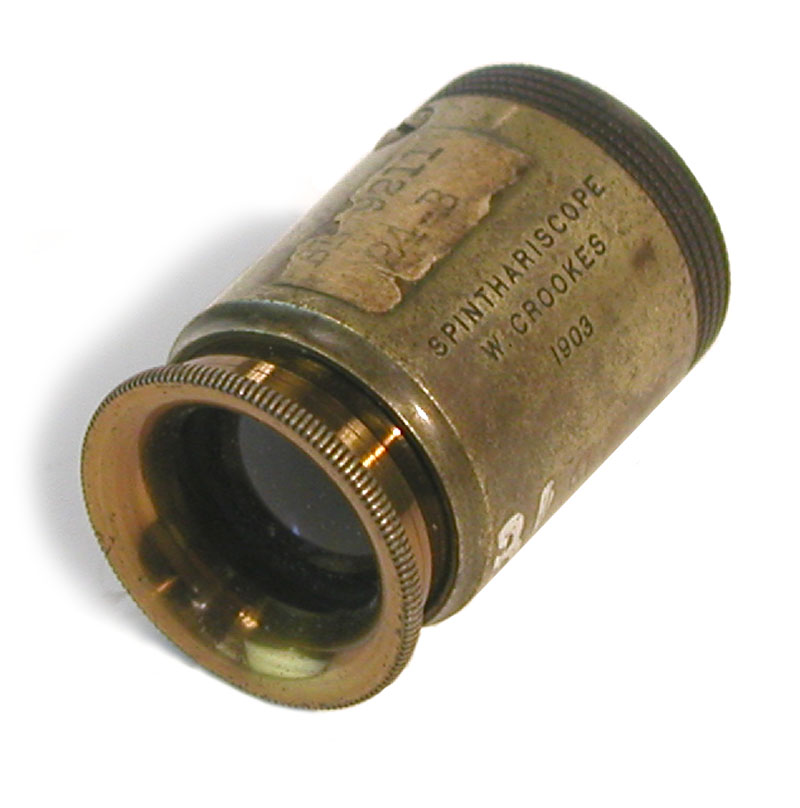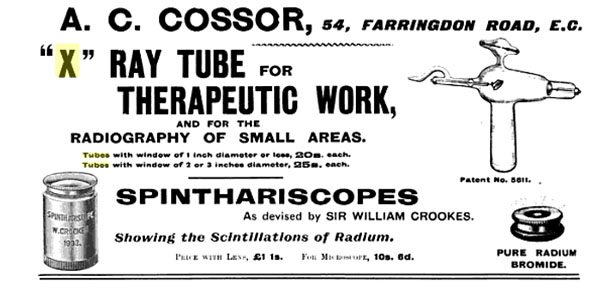Crookes Spinthariscope (ca. 1920s)

The spinthariscope was invented in 1903 by William Crookes. These two photos show an example of the first commercially-available version of the spinthariscope. This particular spinthariscope came from Robert Millikan's Laboratory at Cal Tech and dates from the 1920s or earlier.
After dark-adapting the eyes, the viewer looks through the lens of the spinthariscope and observes a screen of zinc sulfide where tiny flashes of light appear, an image Crookes described as a "turbulent luminous sea." Each flash of light is produced by an alpha particle emitted from a tiny sample of radium on the tip of a pointer positioned just above the screen. The spinthariscope can be considered the first radiation counter, i.e., it is capable of recording individual events.
Read a story about the spinthariscope of William Crookes on the overview page.
The following advertisement appeared in the April 1903 issue of the Archives of the Roentgen Ray. The similarity between our spinthariscope and that illustrated in the advertisement indicates that our example is possibly the earliest commercially available version of the spinthariscope. The orientation of the text on the side of the spinthariscopes is different, but that might have been altered in the illustration for clarity.
Kindly donated by CalTech courtesy of Bud Cowan.

